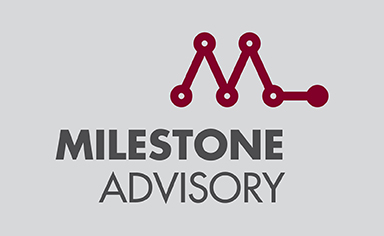If you have a pension plan do you read and understand your annual benefit statement? If you don’t here’s some free advice!
In Milestone Advisory, I spend the majority of my time with clients who are approaching retirement or who have already reached this particular milestone. This part of the financial lifecycle is about taking stock of what you have already accumulated in pension funds and how to maximise its benefits into the future.
Often, it is not until this point that people look for advice around their retirement planning.
I met a couple recently who were decidedly different. They “hadn’t a clue” about pensions, but they had both recently turned 50 and felt they needed some help. While both had accumulated pension funds over the course of their working lives, they did not know what these funds meant for their financial future.
At the end of this particular meeting, I felt that the information I provided and explained was the sort of information everyone needs: So, here it is – for free.
Both of my clients, having been in pension schemes since their early 30’s felt “that box was ticked”. This might once have been true; if you joined a company in your early 20’s and stayed there until your 65th birthday with a pension promise of 2/3rds your final salary. However, defined benefit pensions, where your income in retirement was defined at the outset are no longer the standard type of pension. Nor is staying with one employer for life. Now, the vast majority of all pensions are defined contribution i.e. the only thing defined is the pension contribution being invested.
Annual benefit statement
In this case, you will need to understand what the contributions will translate to in income terms when you retire. This is where your annual benefit statement comes in. Each year, your provider will send you such a statement, outlining the contributions that have been paid in along with the current value of your fund. It will also lay out a set of figures that show you the value of your income in retirement based on these contributions.
It is only when you read and understand this that you can decide if the “pension box” is ticked. It may be that you are on target for a financially comfortable retirement or you might be surprised to learn that there is a gap between what you will need compared to what you have.
A pension scheme is simply a tax efficient long-term savings plan, but knowing what the outcome will be at retirement is vital. It is the key to ensuring you have time to enhance your savings should you require.
It is crucial that you take some time to read your defined contribution (DC) benefit statement each year. Although the layout varies between providers, legislation dictates that all providers include the same information. This includes your personal information, salary details, your pension contribution level and a statement showing contributions remitted to the scheme in the year since your last statement. You should take a look over this information to ensure it is correct.
The key area is what is known as a statement of reasonable projection. This is where you will see the details of your projected benefits at normal retirement age, based on a set of certain assumptions.
While this is not a cast iron guarantee of what will be available to you at retirement, it is the best estimate of what your future fund value and pension will be and the only way you can establish if your contributions into your pension will provide you with meaningful income in retirement.
Time to review
Back to my new clients, a couple in their 50’s, with a file full of unread benefit statements. We looked at each of their most recent statements. Both were happy with their fund values, surprised they had saved so much over the years. Both equally surprised by how those fund values translated into income in retirement. Taking into account the fact that their mortgage would be paid off by the time they retire and that they would both be entitled to the contributory state pension when they are 68 they still saw a potential shortfall in their desired income. Finding out now at age 50 gives them close to 20 years to address this. Rather than at 65 or 68 when they go to collect.
For further information please contact Susan O’Mara at: susan@milestoneadvisory.ie or phone: 01-4068020
Milestone Advisory DAC t/a Milestone Advisory is regulated by the Central Bank of Ireland.






